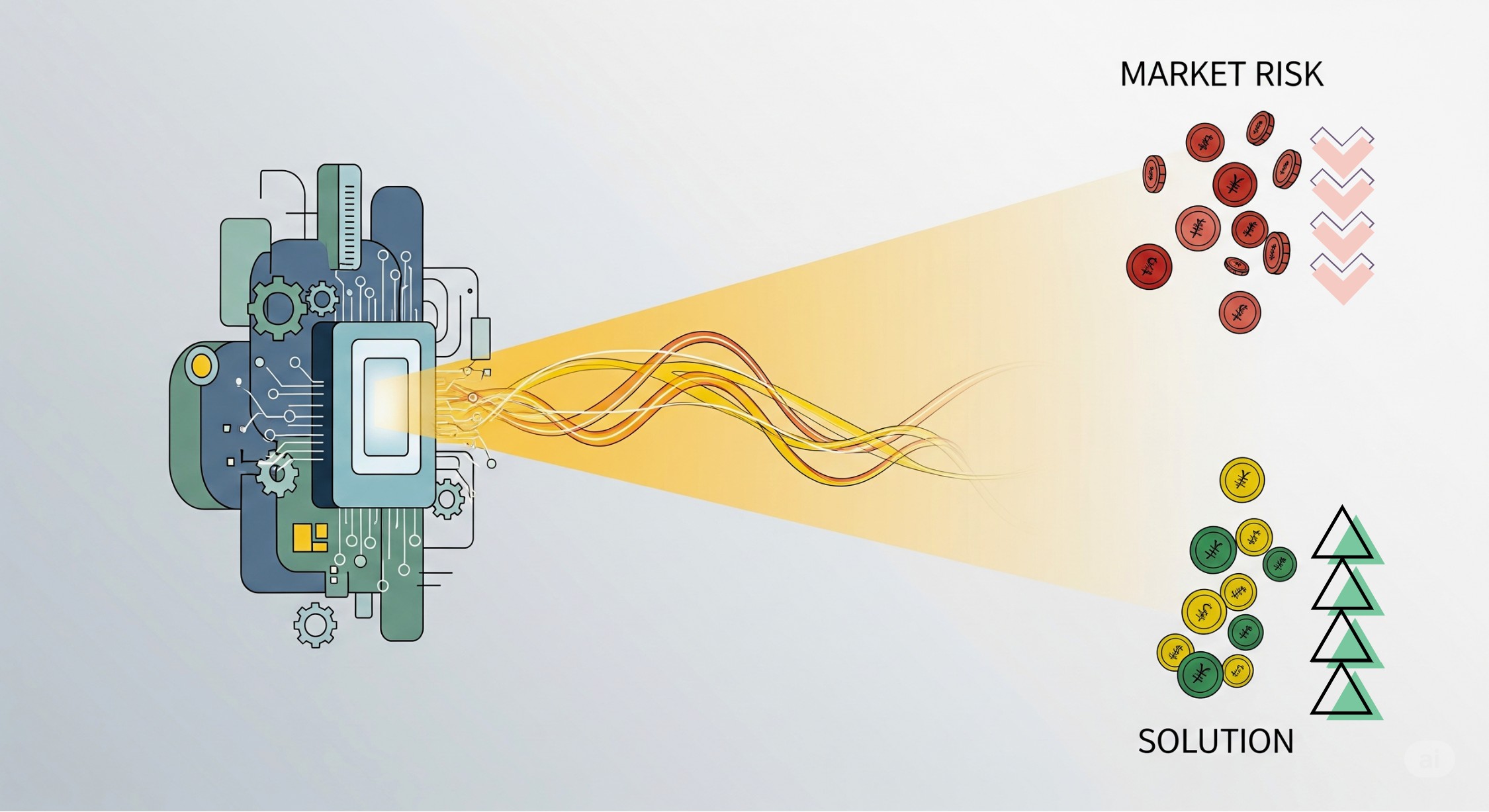From Hindsight to Foresight: The Rise of Predictive Risk Management

Traditionally, risk management in asset management was largely reactive, crunching historical data, setting broad-based thresholds, and relying on expert instinct. But with trillions of data points now available across public markets, alternative data, and internal operations, predictive risk is replacing static risk.
Machine learning models, especially those trained on time-series financial data, are increasingly capable of forecasting market movements, credit downgrades, and liquidity crunches before they materialize. For example, one of the largest asset management companies’ AI research team uses models that analyze over 100 million news articles and financial documents to generate sentiment-driven forecasts, helping traders mitigate exposure before sentiment sours.
According to a Deloitte study, 78% of asset managers have already adopted some form of predictive analytics, with real-time risk scoring becoming standard across fixed income, equities, and multi-asset portfolios.
AI as the Risk Radar: Reading Signals Across the Noise
The markets aren’t just fast, they’re noisy. Tweets, macroeconomic updates, policy decisions, and social sentiment all move the needle. Human analysts can’t keep up. But machines can.
AI algorithms, particularly those in the Natural Language Processing (NLP) domain, are now parsing news headlines, analyst reports, and even ESG disclosures to extract early warning signals. A change in central bank tone? A company’s subtle downgrade in outlook? These are captured and quantified in risk dashboards using neural networks and transformer models (yes, the same tech behind ChatGPT).
For instance, asset managers often have to continuously ingest structured and unstructured data from over 60,000 sources to simulate market scenarios and stress tests. They don’t just flag risk, they have to rank it, contextualize it, and then link it to assets under management (AUM).
Big Data + AI = Real-Time Resilience
 Big data is the lifeblood of AI, and nowhere is this more apparent than in risk modeling.
Big data is the lifeblood of AI, and nowhere is this more apparent than in risk modeling.
Asset managers are leveraging alternative data sets like satellite imagery (to assess supply chain health), geolocation data (to monitor retail footfall), and even weather patterns (to price climate-related risks) to assess portfolios. These vast and varied data streams are processed in real time using cloud-based data lakes, where AI models can detect anomalies and predict impact.
For example, during COVID-19 lockdowns, some hedge funds used foot traffic data from mobile apps to anticipate revenue drops in retail and hospitality before earnings reports were released, allowing for better-informed trading decisions.
Tackling Operational Risks: Where AI Quietly Saves Millions
While market risk grabs the headlines, operational risk quietly chips away at performance, compliance breaches, delayed settlements, human errors, and outdated workflows.
Here, AI plays the role of the tireless, ever-watchful operations manager.
- Document intelligence tools use ML to scan contracts, trade confirmations, and KYC documents, automatically flagging missing clauses or anomalies.
- Robotic Process Automation (RPA) bots powered by AI help streamline repetitive tasks like reconciliations and regulatory reporting.
- Anomaly detection models monitor transaction patterns to prevent fraud or operational breakdowns.
In one case, a European asset manager implemented AI to automate pre-trade compliance checks, reducing errors by 83% and cutting operational costs by nearly $2M annually.
ML in Portfolio Optimization: The New Alpha Engine
AI isn’t just about defense, it’s about offense too. Increasingly, firms are using reinforcement learning and Bayesian optimization to explore optimal portfolio allocations across shifting market conditions.
Think of it like a GPS that constantly recalculates the fastest route, not based on where traffic was last week, but where it’s building right now.
This has led to the emergence of “AI-native” funds that self-adjust based on live data inputs, from currency movements to commodity prices to policy changes. According to PwC, firms that integrated machine learning into portfolio strategy reported 8–12% performance improvement over traditional quant strategies.
The Human + Machine Equation: It’s Not Either/Or
 There’s a misconception that AI replaces the human touch in asset management. In truth, the best models are augmented by human insight.
There’s a misconception that AI replaces the human touch in asset management. In truth, the best models are augmented by human insight.
AI handles scale, speed, and complexity. But investment philosophy, ethical judgment, and nuanced decision-making still rest with humans. The future isn’t robo-advisors versus portfolio managers, it’s synergy.
Forward-thinking firms are embedding AI copilots into investment desks, enabling portfolio managers to simulate various scenarios, backtest strategies, and evaluate trade-offs faster than ever.
The Compliance and Governance Lens: Explainable AI is Key
As regulators tighten scrutiny around algorithmic decision-making, asset managers are adopting “explainable AI” (XAI) frameworks. These help decode how models arrive at decisions, especially crucial in regulated environments like MiFID II or the SEC’s reporting regimes.
Firms are also setting up AI Ethics Boards, ensuring model fairness, auditability, and bias mitigation, especially when dealing with client-facing personalization algorithms.
So, What’s Next?
As AI and big data capabilities mature, asset management will see even more proactive risk postures:
- Digital twins of portfolios for live simulation
- Multi-agent AI systems coordinating trades and risk hedging across desks
- AI-driven ESG compliance engines scoring sustainability risks in real time
What’s clear is this: firms that embrace these technologies not only mitigate risk better, they position themselves as smarter, faster, and more client-responsive than their competition.
In Conclusion
In an era where milliseconds can move markets and operational slip-ups can cost reputations, staying reactive is no longer enough. Asset managers must evolve from risk responders to risk anticipators.
At Experion, we’re helping financial firms make that shift, designing AI-powered, data-rich solutions that not only reduce uncertainty but turn it into a competitive edge. Because in today’s markets, the best defence is a predictive offense.

